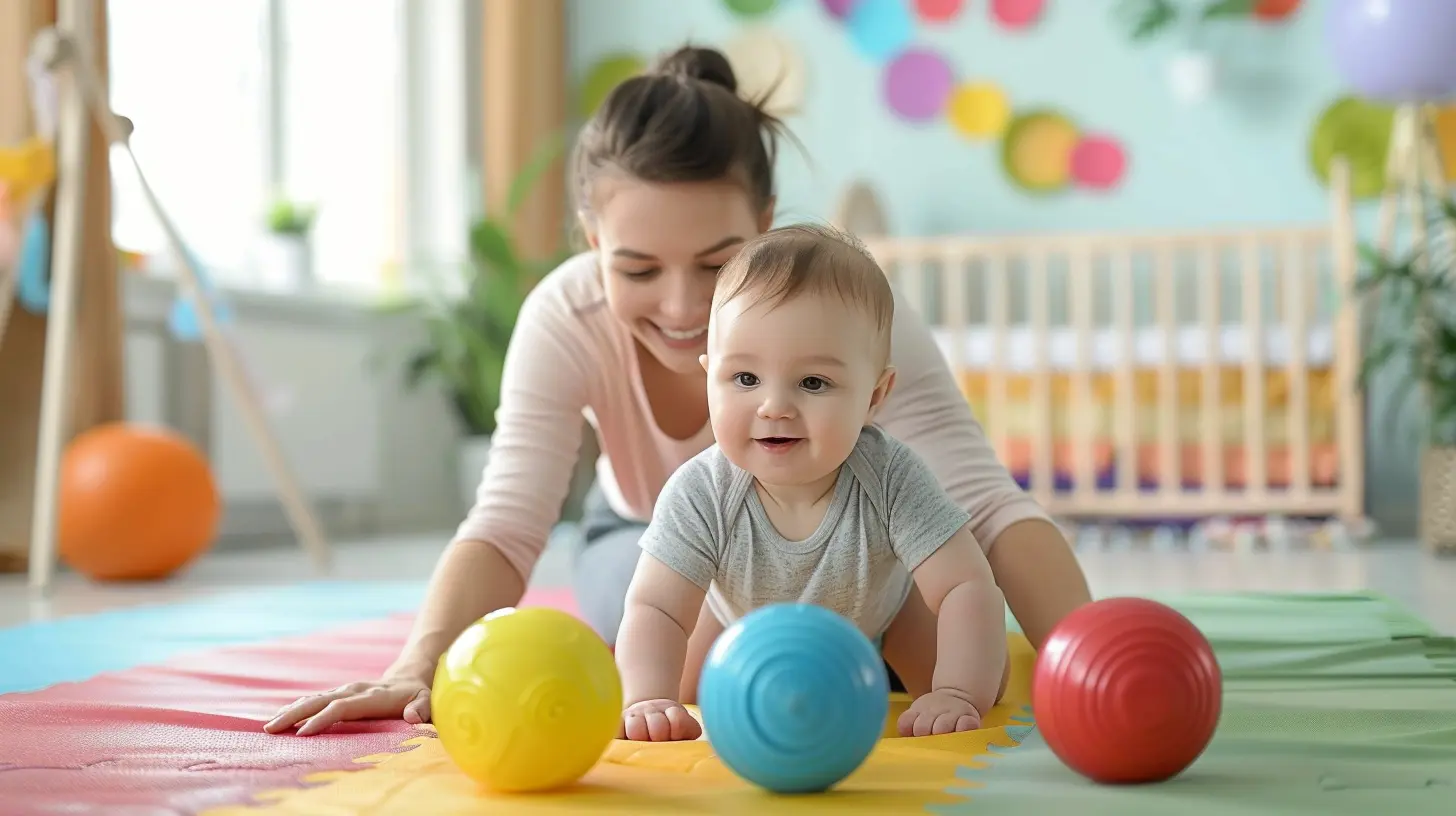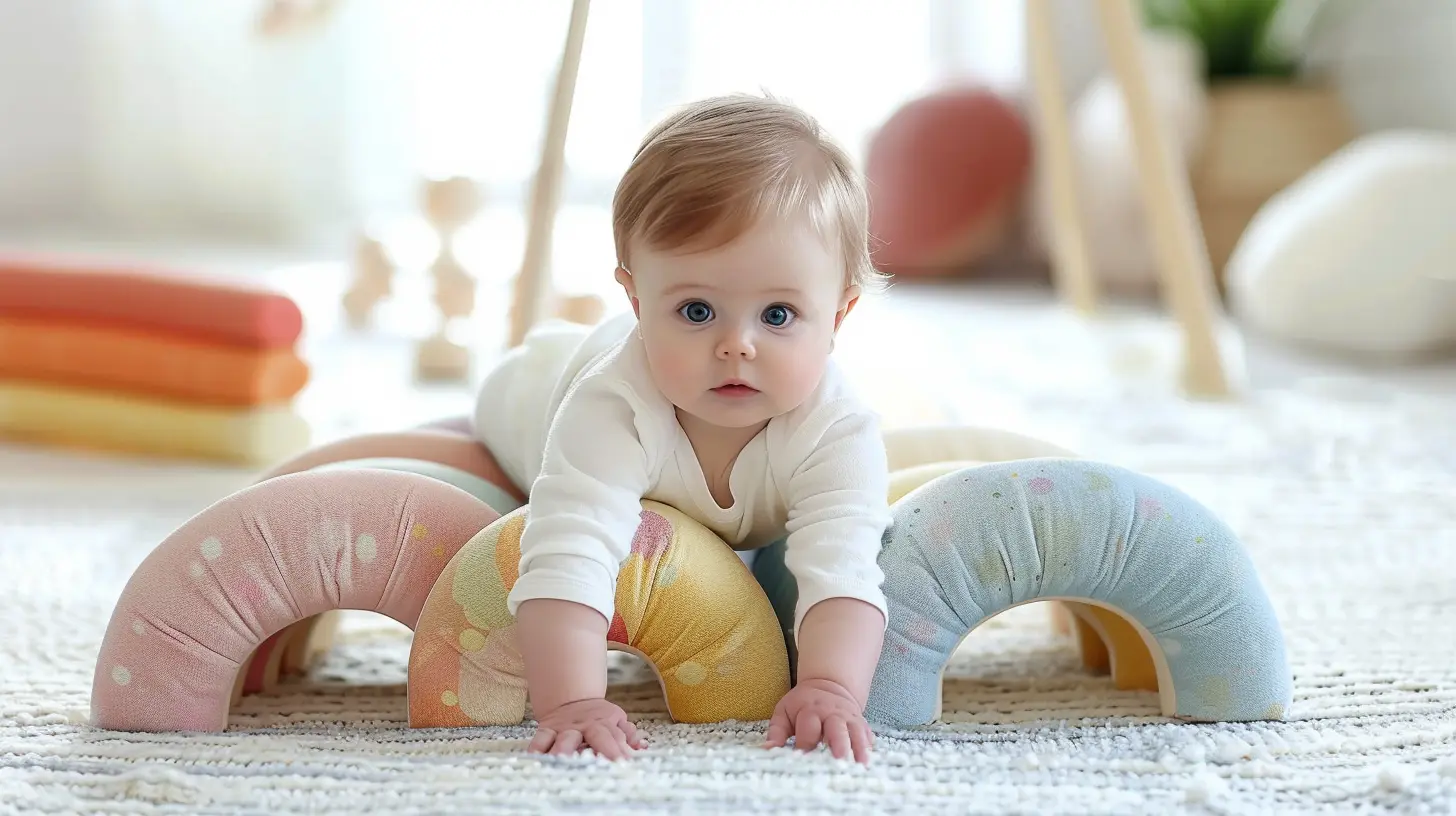Supporting Your Baby’s Physical Development with Gentle Exercises
11 November 2025
Let’s face it—newborns are adorable little blobs of sweetness. But guess what? Those tiny muscles need some love too! While your baby may spend most of their early days eating, sleeping, and filling diapers like a boss, their physical development is happening quietly behind the scenes. Supporting your baby’s physical development with gentle exercises can be both fun and crazy-amazing for their growth.
And no, you don’t need to be a baby personal trainer (although, baby lunges would be hilarious). These exercises are simple, safe, and actually pretty delightful. So grab a clean blanket, cue the baby giggles, and let’s dive in.
Why Bother with Baby Exercises Anyway?
You might be thinking, “My baby can’t even hold their head up—should I really be ‘exercising’ them?” Yes, yes, and yes. Just like adults, babies benefit from movement. Even tiny, gentle motions can:- Strengthen their muscles
- Improve motor skills
- Boost body awareness
- Encourage rolling, crawling, and walking milestones
- Bond with you (hello, adorable workout buddy!)
Think of it like laying the foundation for all their future moves—sitting up, crawling across the room like a determined potato, and eventually, trying to climb the dog.
When to Start Baby Exercises
Spoiler alert: You can actually start from day one. Yep, newborns are softer than a marshmallow in the sun, but that doesn’t mean they don’t need movement.The key here is gentle. We're not talking pushups or planks. We’re just nudging them towards strength and coordination through touch, movement, and interaction.
Pro tip: Always check with your pediatrician before starting any new routines, especially if your baby was born prematurely or has any medical conditions.
Setting the Stage: Your Baby Gym (a.k.a. Your Floor)
You don’t need any fancy equipment. No need to turn your living room into an overpriced baby boot camp. All you need is:- A soft blanket or baby mat
- A calm, quiet space
- Clean hands (very important!)
- Your smiling face (bonus points if you sing… off-key is fine)
Alright, ready to roll? Let’s get into some simple exercises that support your baby’s physical peak performance (or, you know, help them not flop like a jellyfish).
Tummy Time: The OG Baby Workout
Tummy time is like the yoga of baby exercises. It’s gentle, builds core strength, and might involve some deep breathing (aka crying, but it’s still working).Why It Matters
Tummy time helps babies:- Strengthen neck, shoulder, and arm muscles
- Prevent flat spots on the back of their head
- Develop coordination for rolling and crawling
How to Do It
Lay your baby tummy-down on a soft surface for short periods—start with a minute or two, several times a day. As they get stronger (and less grumpy about it), increase the time.Make it fun! Get down on their level, make silly faces, or use a mirror so they can admire their drooly little self.
Baby Bicycles: Kickstart Those Legs
No, we’re not getting them ready for Tour de France. But “bicycle kicks” are fantastic for soothing gas and strengthening the lower body.How to Do It
- Lay your baby on their back.- Gently hold their feet and mimic a bicycle pedaling motion.
- Talk, sing, or make zoom-zoom sounds while doing it. It makes it 10x cuter.
This helps with digestion too. Bonus points for fewer gassy toots!
Hand-to-Feet Play: Building Coordination
This one feels like a game—and babies love it.How to Do It
- Lay your baby on their back.- Gently take their hands and guide them toward their feet.
- Let them grab their toes (or help them in the beginning).
You’ll be amazed at how this little movement boosts flexibility and encourages those adorable toe-grabbing moments.
Rolling Practice: The Baby Barrel Roll
Rolling over is a major milestone. It’s a baby’s first taste of "I can go places!" Let’s help them get there.How to Do It
- Place your baby on their back or tummy.- Gently guide them to roll to their side using a favorite toy or your voice to entice them.
- Try doing it both directions during playtime.
At first, they’ll be like, “What is happening?” But with practice, they’ll become little rolling pros (and you’ll need to start watching them like a hawk).
Sit-Up Support: Core Goals, Baby!
We’re not talking full sit-ups here—it’s more like assisted baby crunches.How to Do It
- Lay baby on their back.- Hold their hands gently and slowly pull them up into a seated position.
- Lower them back down gently.
Smiles and silly faces help this feel more like play. This strengthens their neck and tummy muscles—super important for sitting up independently!
Mini Massage Moves: Calm but Effective
Massage is magical. Not only is it relaxing, but it promotes circulation, flexibility, and can even help with sleep.How to Do It
- Use gentle strokes on baby’s arms, legs, back, and tummy.- Use baby-safe lotion or oil (optional).
- Keep the room warm and cozy.
This is fantastic for bonding too. Plus, it’s the only workout that might actually make them nap after. Total win.
Dance Party Time: Wiggle and Groove
Okay, technically not an “exercise,” but dancing with your baby is a joyful way to engage their muscles, vestibular system, and social bonding.How to Do It
- Hold your baby close (support that head if needed).- Sway gently to music.
- Bounce a little, spin a bit, sing along (badly).
Babies love rhythm, and the movement helps with balance and coordination. It also gives your arms a low-key workout—hello, baby biceps!
Water Play for the Win
If your baby enjoys bath time (or at least doesn’t scream the whole time), use that water to introduce gentle movements.How to Do It
- Support your baby securely, letting their arms and legs float and move.- Gently swish water around them.
- Try little kicks or floating toys to reach for.
The water provides gentle resistance while supporting their movements—like a baby-version of aqua aerobics.
Tips to Keep in Mind
Before you go full baby-trainer mode, remember these keys to success:- Read their cues: If your baby fusses or seems uncomfortable, it’s okay to stop and try later.
- Make it playful: This isn’t a boot camp. If they’re having fun, they’ll want more.
- Be consistent: A little bit every day goes a long way.
- Use your voice and face: Babies are watching you like wide-eyed sponges—be animated and encouraging.
What If My Baby Hates It?
Guess what? That’s totally normal. Not every baby is going to love tummy time or gentle stretches right away. The trick is to start small and sneak in those movements during moments of calm and play.Try doing exercises after a nap, during diaper changes, or while listening to music. Eventually, your baby will associate movement with fun—and hey, maybe you’ll even get a giggle or two out of it.
The Real MVP: You!
Supporting your baby’s physical development doesn’t require a Ph.D. in kinesiology or expensive gear. It just takes some love, a little daily effort, and your willingness to be a part of their journey—one tiny wiggle at a time.As your baby grows, these early exercises lay the groundwork for everything from crawling to walking to climbing on the couch when you're not watching.
Keep it gentle, keep it fun, and remember—every kick, grab, and roll is a step towards their amazing little future.
Now go out there and show those baby biceps some love!
all images in this post were generated using AI tools
Category:
Infant DevelopmentAuthor:

Austin Wilcox
Discussion
rate this article
1 comments
Patricia Harmon
This article provides valuable insights into promoting healthy physical development in infants through gentle exercises. It's great to see emphasis on a nurturing approach, encouraging parents to engage with their babies in enjoyable ways. A balanced focus on developmental needs and fun activities fosters a strong parent-child bond.
November 12, 2025 at 4:48 PM

Austin Wilcox
Thank you for your kind words! I'm glad you found the emphasis on nurturing engagement and fun activities beneficial for promoting healthy physical development in infants.


